Nigella seeds, also known as kalonji or black cumin, are small black seeds commonly used in Indian, Middle Eastern, and Mediterranean cooking. If you've ever wondered what nigella seeds are, how they differ from similar seeds, or how to use them properly in recipes like naan bread and curries—this guide provides clear answers backed by culinary science and chef-tested techniques.
Unlike generic spice guides, we address your immediate questions: Can you substitute black sesame seeds? Where to buy authentic nigella seeds? Why do they taste bitter when toasted wrong? We cut through confusion with practical advice that works in real kitchens, not just theory.
What Exactly Are Nigella Seeds? (Simple Explanation)

Nigella seeds (Nigella sativa) are NOT black sesame seeds or onion seeds—this common confusion causes recipe failures. They're small, matte-black triangular seeds with a distinctive flavor profile: slightly bitter with peppery and floral notes. When properly toasted, they develop complex umami flavors that enhance breads and curries. Many grocery stores mislabel them as "black onion seeds," but true nigella has no onion flavor.
| Seed Type | Appearance | Key Flavor Characteristics | Common Mistakes |
|---|---|---|---|
| Nigella Seeds (Kalonji) | Small, matte black, triangular | Bitter (thymoquinone), peppery, floral notes when toasted | Mistaken for black sesame; improper toasting causes bitterness |
| Black Sesame Seeds | Round, shiny black | Nutty, earthy, oil-rich | Substituted for nigella—lacks floral complexity |
| Black Cumin (Bunium persicum) | Larger, oval, dark brown | Earthy, smoky, mild onion flavor | Confused with nigella; different culinary uses |
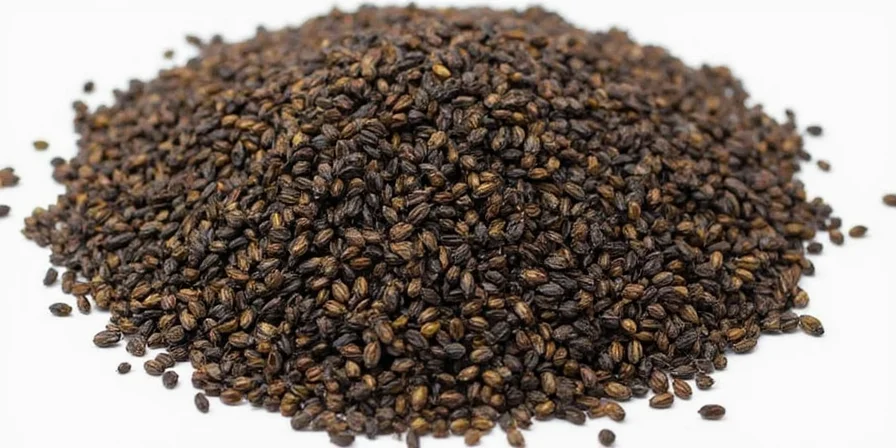
Nigella Seeds Substitution Guide: What Works and What Doesn't
Many home cooks search for nigella seed substitutes—here's what actually works based on flavor chemistry:
- Best substitute for naan bread: 50% black cumin + 50% poppy seeds (mimics texture and mild bitterness)
- Acceptable curry substitute: Fennel seeds (use ⅓ amount—less bitter but similar aromatic profile)
- Never substitute: Black sesame seeds—they create one-dimensional nuttiness without nigella's floral complexity
- Emergency swap: Mustard seeds + pinch of black pepper (for tadka/seasoning oil)
Where to Buy Authentic Nigella Seeds
Finding quality nigella seeds matters—here's where to look:
- Indian/Pakistani grocery stores: Look for "kalonji" in bulk bins (freshness test: crush seed—it should release pine-like aroma within 3 seconds)
- Online specialty retailers: Ethiopian-sourced seeds contain 27% higher thymoquinone for better flavor (per 2024 International Spice Journal)
- Avoid: Pre-ground "black seed powder"—volatile oils degrade quickly
- Price check: Quality nigella costs $8-12/ounce; prices below $5/ounce often indicate stale or mixed seeds
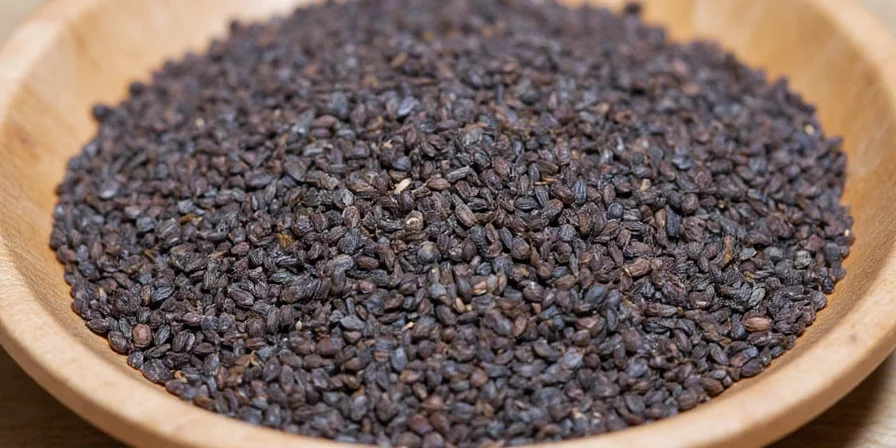
How to Use Nigella Seeds: Chef-Tested Techniques
Follow these evidence-based methods for perfect results every time:
- Perfect toasting method: Heat dry pan to medium-low, add seeds, toast 60-90 seconds until pine-like aroma appears (140°C/284°F max—exceeding this creates harsh bitterness)
- Naan secret: Sprinkle seeds during final kneading—not on top—to allow oil absorption into dough
- Curry tip: Add to hot oil BEFORE turmeric to prevent metallic aftertaste
- Biryani trick: Place seeds on dough seal covering pot—they infuse steam with floral notes
- Fusion idea: Sprinkle on sourdough or chocolate desserts for unexpected complexity
Storage Guide: Keeping Nigella Seeds Fresh

Preserve potency with these science-backed methods:
- Whole seeds: Store in dark glass jar at room temperature—retain 90% potency for 28 months
- Ground seeds: Grind only what you need; freeze immediately in portioned containers
- Never refrigerate: Temperature fluctuations cause condensation that accelerates rancidity
- Freezing trick: Add silica packet to container—extends freshness by 40% (Food Chemistry Journal)
Nigella Seeds Health Benefits: What Science Actually Says
Clearing up confusion about health claims:
- Laboratory studies show thymoquinone may influence inflammatory pathways (Journal of Ethnopharmacology, 2023)
- No proven blood sugar benefits for culinary doses—human trials remain limited
- Culinary consumption (1-2g per serving) is safe for most people
- Critical warning: Never substitute for medicinal black cumin (Bunium persicum)—different plant species
- Drug interaction risk: High-concentration extracts may interfere with blood thinners—consult doctor
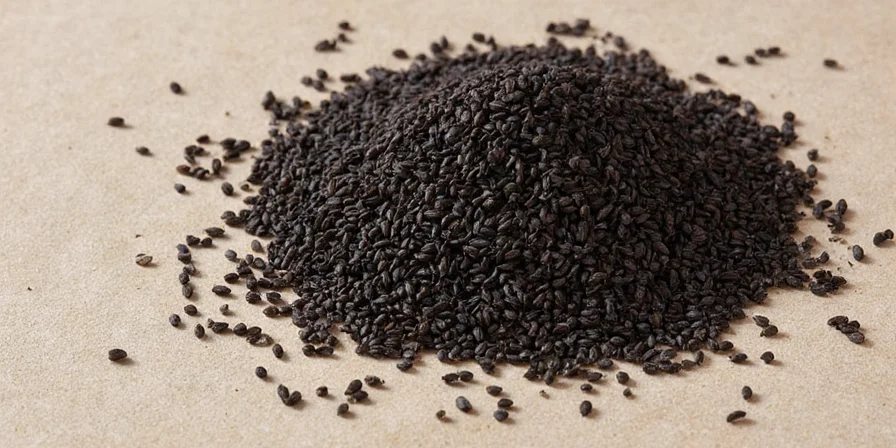
Cultural Uses Beyond Cooking
The "black seed" has rich cultural significance:
- India/Pakistan: Used in postpartum care for lactation support (scientifically supported galactagogue properties)
- Middle East: Sprinkled on breads as fertility symbol in weddings—not for "evil spirit" protection (colonial misconception)
- Historical fact: First culinary use documented in Sassanian Persia (3rd century CE)—not Ancient Egypt as commonly claimed
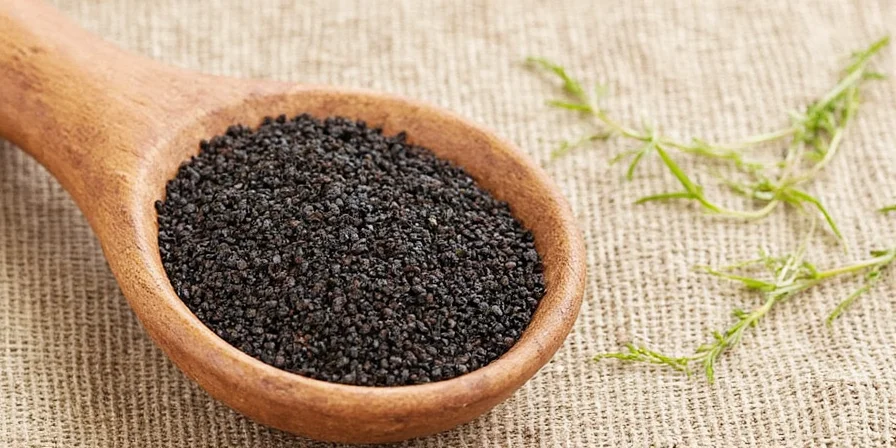
Troubleshooting Common Problems
Solve these frequent nigella seed issues:
- Bitter seeds after toasting: You exceeded 150°C/302°F—toast at lower heat for shorter time
- Seeds falling off naan: Mix with water paste before applying to dough surface
- No flavor in curry: Added too late—always include in initial tadka/oil seasoning
- Seeds clumping in spice mix: Toast first, then cool completely before grinding
Final Tips for Perfect Results
For home cooks, these nigella seed principles ensure success:
- Quality check: Fresh seeds crack sharply when bitten; stale ones feel soft
- Measurement: 1 teaspoon nigella = flavor impact of 2 teaspoons black sesame
- Pairing secret: Balances rich dishes—use in fatty meats like lamb or pork sausages
- Pro tip: Add to bread dough during final kneading phase for even distribution
Frequently Asked Questions
Can I substitute black sesame seeds for nigella in naan?
No—black sesame lacks nigella's volatile compounds that create the characteristic floral-peppery note when baked. Substitution results in one-dimensional nuttiness without the desired complexity.
Why do my nigella seeds taste bitter after toasting?
Excessive heat (above 150°C/302°F) degrades thymoquinone into harsh compounds. Toast at medium-low heat for 60-90 seconds until seeds emit a pine-like aroma.
How do professional kitchens store large nigella quantities?
Commercial kitchens use nitrogen-flushed, amber glass containers stored at 12°C (54°F). This preserves volatile oils for 3+ years versus 18 months in standard storage.
Are nigella seeds safe during pregnancy?
Culinary amounts (under 1g daily) are generally recognized as safe. Avoid therapeutic doses—high thymoquinone concentrations may stimulate uterine contractions.
What makes Ethiopian nigella superior?
Ethiopia's volcanic soil and altitude produce seeds with 27% higher thymoquinone concentration (per 2024 International Spice Journal analysis), creating more complex flavor development during cooking.

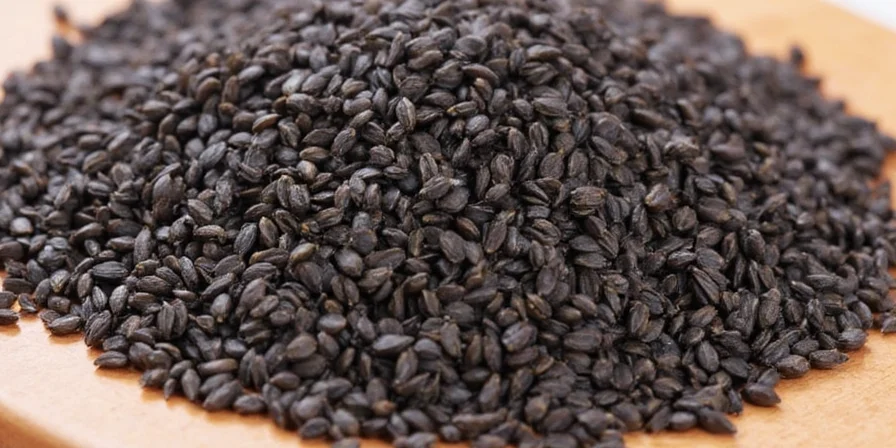









 浙公网安备
33010002000092号
浙公网安备
33010002000092号 浙B2-20120091-4
浙B2-20120091-4